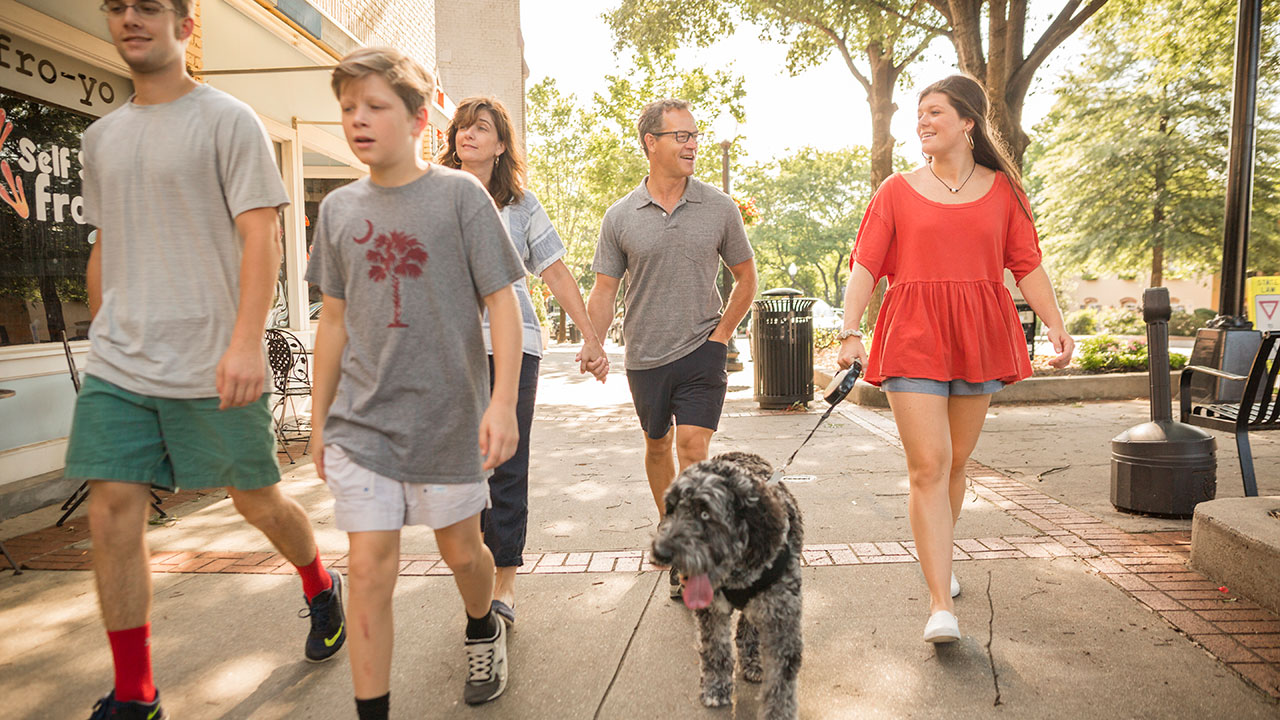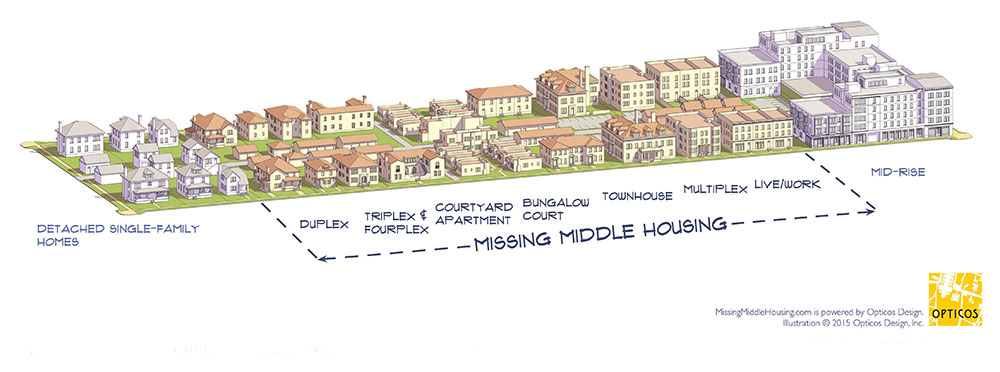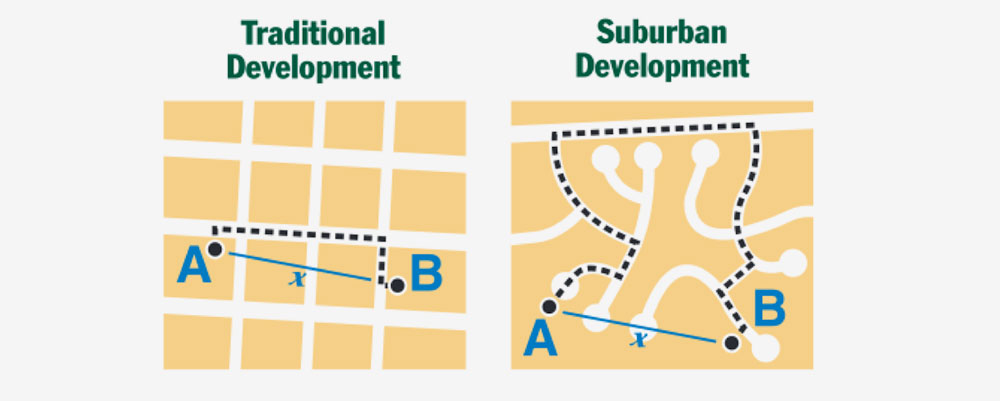5 things Greenville County can do to accommodate growth and limit sprawl
October 16th, 2019
By Lisa Hallo & Sherry Barrett, Land Policy Team
There are plenty of reasons to curb sprawl. It eats up our green spaces and local farms. It worsens traffic congestion and causes stormwater problems. It’s also exorbitantly expensive to serve with sewer, water, and roads.
Our “business as usual” development practices in Greenville County are putting us on a path to more than double our urban development footprint by 2040. That's not an option — we simply can't afford it. A recent study showed that if our current development trends continue, the revenues generated from new development will likely not cover even half of the costs to serve it.
Fortunately, there are practical measures we can take right now to mitigate sprawl while welcoming growth and economic development. Here are five that we think make sense for Greenville County.
1) Create pockets of strategic density

Pockets of well-designed higher density development — at a scale appropriate for Greenville County — are needed to build a foundation for more robust public transit. Not only that, building more densely where infrastructure can support it reduces sprawl and protects our rural areas.
We need to identify nodes where this type of development is sensible and prioritize walkability over drive-ability in those areas. Such mixed-use, compact development generates property tax revenue and uses land much more efficiently than lower-density patterns of development.
2) Rethink neighborhood design

Jack Robert Photography
If you live in a conventional neighborhood in Greenville County, you likely can’t walk/bike safely or conveniently to work, school, or the grocery store. That’s primarily because of how — and where — we’ve designed many of our neighborhoods in recent decades.
Historic neighborhoods were built to be walkable and close to everyday destinations, and included a mix of housing types. Conventional subdivisions are designed in just the opposite way — homes and price points are homogenous within neighborhoods, and residents must rely on cars for nearly every trip. We need to rethink how we design our neighborhoods, where we locate them, and how to provide residents more housing and mobility options.
3) Remove barriers to Missing Middle housing

Source: Opticos Design
One way to provide additional housing and mobility options is through Missing Middle housing — home types like accessory dwelling units, duplexes, triplexes, and quads that are located within walkable areas. These home types — which can generally be found in the most sought after neighborhoods in any urban area — accommodate residents using less land while maintaining the look, feel, and character of established neighborhoods.
See a recap and presentations from 2018's Greenville Housing Forum: The Missing Middle
Greenville needs to remove regulatory barriers to Missing Middle housing. Doing so will expand the diversity of home options in our community and help meet the growing demand for affordable and walkable urban living.
4) Improve street connectivity

Have you ever wondered why so many neighborhoods are built with just a single point of entry, funneling all residents onto the same congested rural road?
When neighborhoods are designed with only one way in and out, all cars must use the same collector road to reach all destinations — inevitably leading to traffic congestion, even in once rural areas.
Not only that, when areas lack good street connectivity, travel by any means other than a motor vehicle is generally not a viable option.
5) Protect rural & natural areas
Nearly two-thirds of Greenville County is unzoned, leaving vast areas of rural land open to development types and intensities totally out of scale and character with the surrounding area. These areas must be protected with stronger land use regulation.
Additionally, there are some places so unique, beautiful, and necessary for maintaining an area’s authentic character that their “highest and best use” is truly in their natural state. Local governments can — and should — play a key role in identifying and protecting such critical natural assets.
Greenville must take action now.
More than 220,000 additional residents are projected for Greenville County by 2040. No matter what form that growth takes, it will necessarily mean change for our community.
By taking action now regarding how and where we accommodate new development, we can help shape the impact that change has on our lives.
In the coming year, Greenville County Council will be making important planning and policy decisions that will steer the course of new development for the coming decade.
If you live in Greenville County, the time is now to let your local elected representatives know that you support land use policies that balance economic development with other community priorities like reducing sprawl and expanding housing and mobility options.
You need not be an expert —as a resident of Greenville County who cares about the community’s future, you have a valuable perspective to share.
Not sure who represents you? Visit this website and enter your street address to find out!
For more information, contact Land Policy Director Lisa Hallo at lhallo@upstateforever.org or Land Policy Manager Sherry Barrett at sbarrett@upstateforever.org


